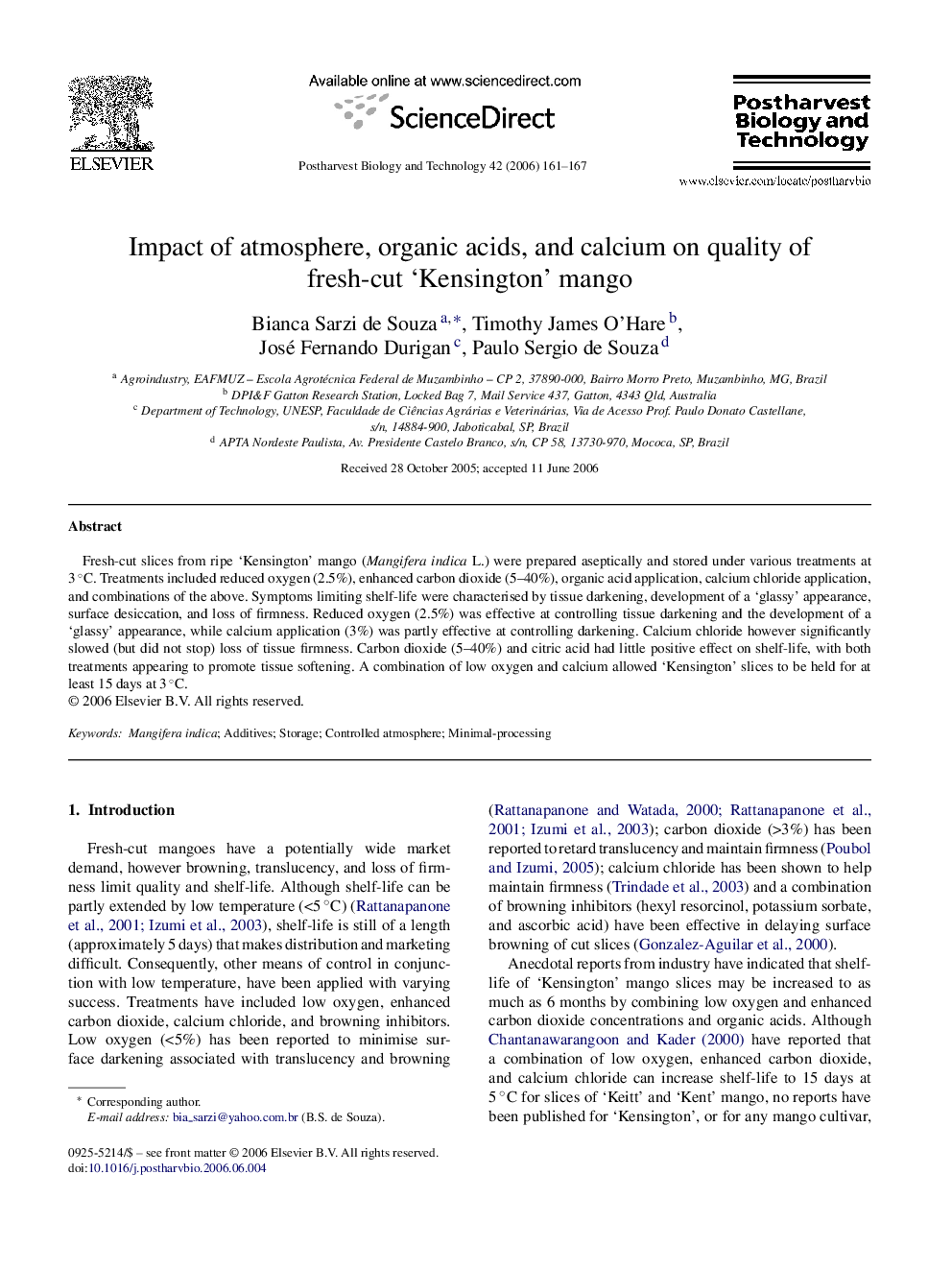| Article ID | Journal | Published Year | Pages | File Type |
|---|---|---|---|---|
| 4519872 | Postharvest Biology and Technology | 2006 | 7 Pages |
Fresh-cut slices from ripe ‘Kensington’ mango (Mangifera indica L.) were prepared aseptically and stored under various treatments at 3 °C. Treatments included reduced oxygen (2.5%), enhanced carbon dioxide (5–40%), organic acid application, calcium chloride application, and combinations of the above. Symptoms limiting shelf-life were characterised by tissue darkening, development of a ‘glassy’ appearance, surface desiccation, and loss of firmness. Reduced oxygen (2.5%) was effective at controlling tissue darkening and the development of a ‘glassy’ appearance, while calcium application (3%) was partly effective at controlling darkening. Calcium chloride however significantly slowed (but did not stop) loss of tissue firmness. Carbon dioxide (5–40%) and citric acid had little positive effect on shelf-life, with both treatments appearing to promote tissue softening. A combination of low oxygen and calcium allowed ‘Kensington’ slices to be held for at least 15 days at 3 °C.
